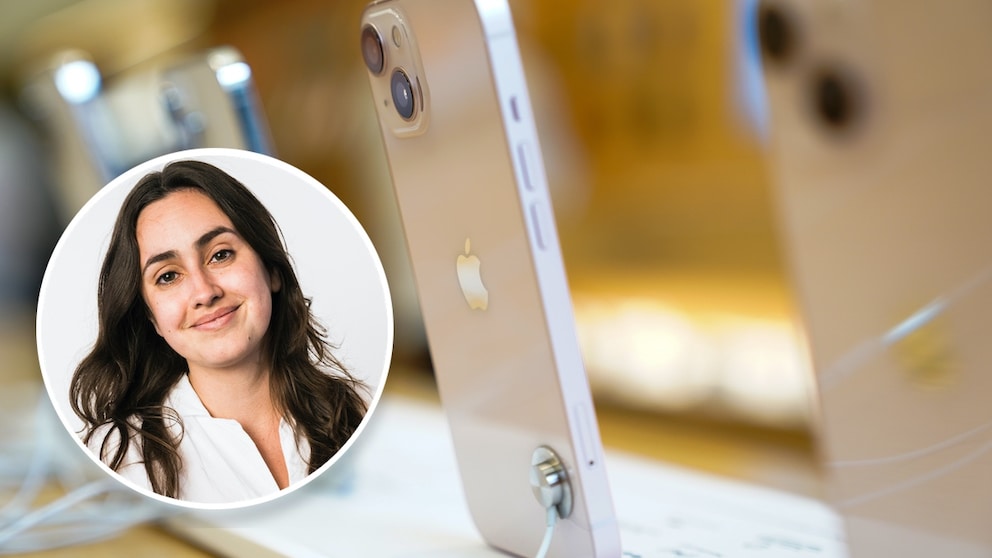March 31, 2025, 9:05 am | Read time: 4 minutes
The smartphone industry often follows the same path across companies. One of these in recent years has been: bigger is better. And this is unlikely to change any time soon if you look at the current plans of the major manufacturers. Apple has apparently buried its smaller smartphones for good. TECHBOOK editor Marlene Polywka thinks that’s a shame — for one very simple reason.
For a limited period of time, Apple was actually my hope when it came to small smartphones. With the iPhone 12 mini and 13 mini, the US company seemed to be actively countering the trend towards larger smartphones. There was also the iPhone SE series. The emphasis is on ‘was’ – indicating the past tense.
End for iPhone Mini and SE
It has now been three years since Apple launched a handy little smartphone onto the market. Back then, it was the 3rd generation iPhone SE. The SE series was not only the smaller counterpart to the current iPhones. The devices were also always significantly cheaper than the rest of the range. The SE 3, for example, featured a 4.7-inch display, weighed 144 grams, and was priced at 549 euros at launch. The technology was also significantly slimmed down in some respects, but I simply love the series — partly because it still had a home button until the end.
Six months earlier, the company also presented the iPhone 13 mini at its keynote. If you wanted more performance in a still manageable size, this was just the thing for you. After all, the display “only” measured 5.4 inches. Today, just a few years later, such dimensions are almost unimaginable. The trend is clearly moving back towards larger displays and housings.
Bigger Is Better — or at Least More Powerful
There are also very practical reasons for this. A larger housing allows for more space to accommodate powerful components. A longer-lasting battery can also be installed in this way — an important point for many users. What’s more, most people now use their smartphones in so many different ways — for texting, streaming, gaming, working — that a large screen is actually more useful than a small one.
This is probably why the success of the iPhone mini was limited. There have been no more updates since the 13 model. Instead, Apple relied on the Plus devices in subsequent generations. According to rumors, these will be history again from 2025 onward, but the smaller mini models will not return.
The iPhone Plus will be replaced by the new Air from this year. However, this will take another form factor to the extreme: it is set to become the thinnest iPhone of all time. This is not good news for fans of small smartphones. Since the presentation of the iPhone 16e, it has also been clear that Apple is saying goodbye to the aforementioned SE series.
No More iPhone Mini and SE, According to Gurman
Industry expert and Apple analyst Mark Gurman has now confirmed in a livestream that Apple has no plans to launch another smaller device on the market in the near future. Given the situation just explained, this is not surprising. And yet, I realize that the growing certainty bothers me. And there’s a very simple reason for this: the size of the current Apple smartphones is simply impractical for me.
As already mentioned, there are good reasons for a large display. And by large, I mean 6 inches upward, because that’s where we are right now. But there are also good reasons not to. And one of these reasons is related to the size of our hands.
I don’t have big hands myself, but I don’t have excessively small hands either and I really struggle to use smartphones with a diagonal of 5.5 inches or more with one hand. The fact that Apple is now also saying goodbye to smartphones that are handy in the truest sense of the word is, therefore, a real problem for me personally.

Apple Is Working on a New Product — and It’s Going to Be Really Expensive

Apple Relaunches Its Affordable Smartphone Range with the iPhone 16e

Apple stops selling adapters and removes important iPhone function
Oh, Apple …
Indeed, the compact size was a key selling point for the 2nd generation iPhone SE. This device sealed my final switch to Apple devices, and I honestly still use it today. However, the smartphone and its successor are not available with a USB-C port, only with Lightning. That’s why Apple stopped selling them officially to comply with EU regulations.
I had been hoping for a new iPhone mini, but it seems that won’t be the case. In my opinion, Apple is forgetting a not insignificant customer group: people who simply want a smartphone that they can comfortably use with one hand without risking long-term hand strain.

